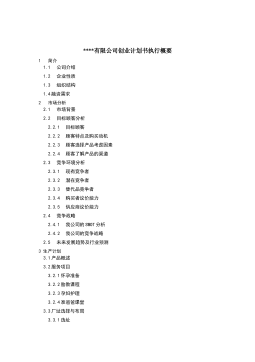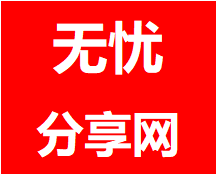数字图像处理在光栅质量评定中的应用
VIP免费
摘 要
计量光栅是一种常用而且又重要的光学器件,它在许多领域中都有广泛的应
用。在使用光栅之前,必须要对它的质量做一评定。虽然光栅作为产品,在出厂之
前已经通过质量检验,但在检验时,是通过显微镜对光栅进行观察,看光栅的条
纹是否规则,是否有明显的凸出或凹陷。使用的显微镜的放大倍数一般为 40 倍。
这是因为如果放大倍数太小,一些细微的细节将会观察不到;而放大倍数过大的
话,视场的范围将太小,因面如果要对光栅的每一部分都要观察到是十分困难的
这样检验起来会很麻烦。这是从客观方面来考虑的;同时在检验时,是通过肉眼
来观察的,不同的人去观察,得到的结论也可能会不同,所以检验结果受到检验
者个人的主观因素的影响也较大,这是从主观方面来考察的。因此,不论从主观
还是客观方面去考虑,这样的检验方法都有不足之处。
由于这些不足之处,有必要对用新的方法来检验光栅的质量做一研究。本文
的目的就是为了改进传统方法,利用计算机图像处理技术处理分析光栅的透射图
从而对光栅的质量进行检验、评定。
本课题至少有以下两方面的意义:
在本文所提出的方法中,检验光栅质量的过程中,经过显微镜放大后的
图像不是直接用肉眼来观察,而是通过传感器输入到监视器中通过计算
机来分析的。这样做一方面克服了显微镜放大倍数这一客观条件的限制
同时也避免了由肉眼观察所带来的主观方面的影响因素。
在检验时,只要用摄像系统采集得到光栅的透射图像,然后对该图像进
行一定的分析,就可以检验光栅的质量,因而检验系统结构简单、快捷。
有一定的实用价值
在本文中,作者主要做了以下工作:
图像的滤波及其方法的选择。
由于在采集光栅透射图像的过程中,可能存在位移、旋转等畸变。也可能由于
其它各种因素的干扰使图像产生噪声或使图像变模糊,因而首先需要对图像进行
平滑和增强等预处理, 这就是对图像的滤波。
在本文中通过分析比较,利用了一种新的滤波技术,即小波变换的方法来消
除图像中的噪声。小波变换是近年来得到迅速发展的一种新的信号处理方法,它
已经在许多领域里得到了重要的应用。小波滤波就是利用信号和噪声在各尺度下
的小波系数有所不同的特点,来对它们进行分离,从而达到滤波的目的。最后用
Matalb 模拟了所得到的结果,并对结果做了分析,模拟结果表明,滤波结果还是
相当理想的。
光栅图像条纹方向的确定
光栅的透射图像是一种典型的纹理图像,它由明暗相间的条纹组成,纹理比
较规则。因而在本文的分析中,条纹的方向是一个重要的参数,需要确定,在本
文的处理中将采用 Hough 变换的方法。
Hough 变换是于 1962 年在美国作为专利而被发表的,它对图像形状可以进行
有效的识别,而且对噪声的影响不太敏感,所以取得了很大的应用。在本文中根
据Hough 变换检测直线的原理,确定了光栅图像条纹的方向,并用Matlab 时进行
了模拟。模拟结果表明,该方法对光栅透射图像的处理效果好,可以达到要求。
图像的二值化算法的研究
以二值图像处理为中心的图像处理系统目前很多,这主要是因为这种系统处
理速度快,成本低,而且还能定义几何学的各种概念等。因此将图像转化成为二
值图像来处理是很有必要的。在本文中对光栅图像进行处理的过程中,也需要把
图像转化成为二值图像。
对图像时行二值化处理时,阈值的选取是一个关键问题,在本文中作者研究
了该问题,并结合本课题研究的目的,提出了一种确定阈值的算法,对该算法用
Matlab 进行了模拟,结果表明该算法是可行的。
评定指标的设计
本文的目的就是通过对光栅透射图像的分析提来评定光栅质量的好坏,要评
定,就必须有评定指标,这是评价光栅质量的关键。指标设计的好与坏,关系到
评价结果的可靠性。因而,本文在指标设计及综合评价分析上也做了一定的研究
并得到了比较满意的结果。
关键词:数字图像处理 光栅 小波变换 二值化 指标 质量评定
ABSTRACT
Metric raster is an important and useful optical instrument, and has been widely
used in various fields. We must access it’s quality before we use a raster. As products,
raster has passed the quality inspection before leaving factory, but the inspection is done
using the microscope to check if the stripe of the raster is regular, if there exists obvious
protrusion or concave. In general, the enlargement factor of the microscope is 40, if the
multiple is too small, the remoteness details can’t be observed. If the multiple is too
large, the visual field will be too small, making it difficult to observe each part of the
raster. Hence, this inspection method is difficult to implement. Further more, different
people may get different results because the results can only be observed by means of
human eyes using this inspection method. It’s easy to see that this inspection method
does have some disadvantages from both subjective or objective points of view.
Based on the facts mentioned above, it’s necessary to find a new way to inspect the
quality of raster. Using the technology about digital image processing, we will improve
the traditional method to analyze the quality of transmission image of raster and
appraise the quality of raster in the end.
This paper has at least two advantages as follows:
Using the method brought forward in this paper, the image enlarged with the
microscope is inputted to computer using a sensor and will be analyzed by
computer instead of human eyes during the course of inspection. This method
not only can eliminate the limitation of multiple of enlargement, but also can
avoid the subjective impacts of human eyes.
The inspection system is simple, practical, and easy to implement, because the
quality of raster can be appraised simply by collecting the transmission image
of the raster for analysis using computer.
What the author has mainly done in this paper is:
The filtering of image and the selection of approach
Because the image is likely to be displaced and rotated in the course of collection,
and the image is tend to include noise or become fuzzy because of some other factors.
Hence, it must be filtered before we analyze the transmission image of raster.
This paper has introduced a new method called Wavelet transform to handle the
image filtering. This technology about digital signal filtering has developed rapidly in
the past several decades and has played an important role in many important
applications in various fields. Depending on the characteristic that the signal and noise
has different wavelet coefficient in different scale, Wavelet transform successfully
separate noise from signal. Using Matlab, a very famous software in engineering
calculation, We simulated the result, and analyzed the result we have got, the result
indicated that the filtering approach is relatively effective.
Determine the directional angel of the stripe in the image
The transmission image of raster is a typical texture image, and the strip in the
image is quite formal. In this paper, the direction of the stripe is an important parameter
for the analysis of transmission image, so the determination of the directional angel of
the stripe is necessary. We finished this work based on the theory of Hough transform .
Hough transform was bring forward as patent in the U.S in 1962, it can effectively
identify the shape of image and isn’t very hypersensitive to the noise, so this approach
is widely adopted in various applications. In this paper, we advances an approach using
the Hough Transform to determine the transmission image’s stripe angle, the effective
result of this approach is validated by the simulation test using Matlab.
The study on algorithm about thresholding
Binary image has many advantages, like higher processing speed, lower cost, the
easier definitions about some geometrical concepts, and so on. Many systems are based
on binary image processing. So it is necessary to transform the color image to binary
image. In this paper, we also need transform the image to binary image in the course of
processing raster image.
To transform the image to binary image, the key problem is to determine the threshold.
We worked on this problem and brought forward a feasible and practical algorithm in
this paper. In the end, we simulated this algorithm using Matlab and the algorithm had
proved to be effective.
The designing of the index of assessing
Our purpose in this paper is to assess the quality of raster based on the analysis of
the transmission image of raster, so we must have some index about it, and this is the
key to quality assessing. The index designed can greatly influence our assessing result
and the reliability of the result. So in the paper we also worked on how to design the
index and on the overall evaluation analysis. And we got satisfactory results in the end.
Key words: Digital image processing, Raster, Wavelet Transform,
Thresholding, Index, Quality Assessing
目 录
摘要
ABSTRACT
第一章 绪 论..................................................................................................................1
§1.1 问题的提出..........................................................................................................1
§1.1.1 光栅简介............................................................................................................................1
§1.1.2 光栅质量的检验................................................................................................................2
§1.1.3 透射图像的采集................................................................................................................2
§1.1.4 本文所提出的方法............................................................................................................3
§1.1.5 本文研究的意义................................................................................................................4
§1.2 该领域目前的研究概况......................................................................................4
§1.2.1 数字图像处理简介............................................................................................................4
§1.2.2 目前研究概况....................................................................................................................5
§1.2.3 纹理图像处理研究概况...................................................................................................6
§1.3 本文的主要内容及结构......................................................................................7
§1.3.1 主要内容............................................................................................................................7
§1.3.2 结构安排............................................................................................................................7
第二章 数字图像的基本概念..........................................................................................9
§2.1 引言......................................................................................................................9
§2.2 图像模型..............................................................................................................9
§2.3 图像的数字化....................................................................................................10
§2.3.1 采样..................................................................................................................................10
§2.3.2 量化..................................................................................................................................11
§2.3.3 图像的矩阵表示..............................................................................................................11
§2.4 数字图像类型....................................................................................................12
§2.4.1 真彩色图像......................................................................................................................13
§2.4.2 灰度图像..........................................................................................................................13
§2.4.3 二值图像..........................................................................................................................13
§2.5 图像类型的转换................................................................................................13
§2.5.1 真彩色图像转换为灰度图像.........................................................................................14
§2.5.2 灰度图像转换为二值图像.............................................................................................14
第三章 图像的滤波........................................................................................................15
§3.1 引言....................................................................................................................15
§3.2 小波变换的概念................................................................................................15
§3.2.1 一维小波变换..................................................................................................................15
§3.2.2 正交多尺度分解..............................................................................................................16
§3.2.3 二维小波变换..................................................................................................................19
§3.3 小波变换滤波及算法........................................................................................21
§3.4 试验仿真............................................................................................................22
§3.4.1 仿真结果..........................................................................................................................22
§3.4.2 结果分析..........................................................................................................................25
第四章 图像条纹方向的确定........................................................................................28
§4.1 引言....................................................................................................................28
§4.2 HOUGH 变换的定义及性质...............................................................................28
§4.2.1 Hough 变换的定义..........................................................................................................28
§4.2.2 Hough 变换的性质..........................................................................................................30
§4.3 图像边缘的检测................................................................................................30
§4.3.1 Sobel 算子的概念...........................................................................................................30
§4.3.2 边缘的提取......................................................................................................................31
§4.4 用HOUGH 变换确定图像纹理的方向..............................................................31
§4.5 试验仿真............................................................................................................33
§4.5.1 仿真结果..........................................................................................................................33
§4.5.2 结果分析..........................................................................................................................34
第五章 图像的二值化....................................................................................................36
§5.1 引言....................................................................................................................36
§5.2 图像二值化的基本概念....................................................................................36
§5.2.1 静态门限..........................................................................................................................36
§5.2.2 一般动态门限..................................................................................................................36
§5.2.3 背景动态门限..................................................................................................................37
§5.3 阈值确定的理论分析........................................................................................37
§5.3.1 概述..................................................................................................................................37
§5.3.2 从布尔代数出发分析.....................................................................................................38
§5.3.3 从二元域出发分析..........................................................................................................41
§5.3.4 一点说明..........................................................................................................................42
§5.4 指标的权重的确定............................................................................................42
§5.4.1 定性分析..........................................................................................................................42
§5.4.2 理论分析..........................................................................................................................44
§5.4.3 权重的确定......................................................................................................................47
§5.5 算法描述............................................................................................................47
§5.5.1 算法分析..........................................................................................................................47
§5.5.2 算法流程图......................................................................................................................48
§5.6 试验仿真............................................................................................................49
§5.6.1 仿真结果..........................................................................................................................49
§5.6.2 结果分析..........................................................................................................................50
第六章 评价指标的设计................................................................................................51
§6.1 引言....................................................................................................................51
§6.2 统计指标............................................................................................................51
§6.2.1 样本空间..........................................................................................................................51
§6.2.2 均值..................................................................................................................................53
§6.2.3 方差..................................................................................................................................55
§6.2.4 偏度..................................................................................................................................56
§6.2.5 峰度..................................................................................................................................58
§6.3 度量指标............................................................................................................59
§6.3.1 面积..................................................................................................................................59
§6.3.2 均方误差..........................................................................................................................61
§6.4 指标的综合分析................................................................................................64
第七章 评价方法及结果................................................................................................65
§7.1 引言....................................................................................................................65
§7.2 评价向量............................................................................................................65
§7.2.1 指标的量化......................................................................................................................65
§7.2.2 评价向量..........................................................................................................................66
§7.2.3 评价向量的范数..............................................................................................................67
§7.3 评价结果............................................................................................................67
§7.4 结果分析............................................................................................................69
§7.4.1 第一类误差......................................................................................................................69
§7.4.2 第二类误差......................................................................................................................69
§7.4.3 评价时间..........................................................................................................................69
第八章 结束语................................................................................................................71
§8.1 本文的主要结论................................................................................................71
§8.2 本文存在的不足................................................................................................72
§8.3 进一步研究的展望............................................................................................72
符号表.............................................................................................................................74
附录.................................................................................................................................75
附录 1各种边缘算子边缘检测结果..........................................................................75
附录 2图像条纹角度计算程序源代码......................................................................76
参考文献.........................................................................................................................80
第一章 绪论
第一章 绪 论
§1.1 问题的提出
§1.1.1 光栅简介
根据物理学中的单缝衍射原理,如果有两条或多条狭缝彼此紧靠在一起,单
色平行光束通过后,形成有明暗相间的衍射图样。这样,由许多等宽、等间距的平
行单缝所组成的光学元件,称为光栅[1]。
光栅的种类很多。若按工作原理来分,有物理光栅和计量光栅两种。前者主要
用于光谱仪器,做色散元件;后者主要用于精密测量和精密机械的自动控制等。
从制造方法上划分,可以分成直接刻制的刻划光栅和照相复制光栅两类。从光栅
的表面结构分,可以分为幅值光栅(也叫黑白光栅)和相位光栅(也叫闪耀光
栅)两种。从光栅载体上划分,有长光栅和圆光栅两种。
正如上面所说,光栅按工作原理来分,有物理光栅和计量光栅两种。前者主
要用于光谱仪器而后者主要用于计量仪器。这是由于它们各自的不同特点所决定
的。对于物理光栅来说,它的条纹相当密集,而计量光栅的条纹不太密集。如果把
一个暗条纹和一个亮条纹称为一个周期的话,一般来说,物理光栅一毫米内的周
期数大约1000 左右,这样光线通过光栅时将发生衍射现象。而对计量光栅来说,
一毫米内的周期数大约为几个到十几个,当光线通过光栅时不会发生衍射而是成
像。所成的像称为光栅的透射图。对一个理想的光栅,放大后的图像如图 1.1 所示。
而它的透射图像也具有类似的形状。
本文就是从计量光栅的透射图像出发来进行研究的,所以本文后文中所提到
的光栅,如果不加特别说明,指的就是计量光栅。
计量光栅应用时,是利用两块光栅叠合时产生的莫尔条纹效应,其中一块光
栅称为主光栅,而另一块称为指示光栅。
从计量光栅的主要功能看,它和标尺、度盘一样,也是一种标准器[2~6]。同时
由于计量光栅具有一系列优点,它的用途愈来愈广泛,不仅用作标准器,而且更
1
图1.1 光栅放大图
数字图像处理在光栅质量评定中的应用
多的被当作传感器和发讯器用于数控机床等。归纳起来,计量光栅主要有以下四
方面的用途[2]:
用于数字式光学计量仪器。如数字万能工具显微镜、光学分度仪和比长仪
等。在这里,光栅是作为标准器应用的。
用于高精度加工机床的长度和角度标准器。如高精度长刻机和圆刻机,
光学坐标镗床等。
用于动态测量仪器。如齿轮单面啮合仪等。
用于数控机床的模-数转换器。如数控车床,数控滚齿机,数控铣床等。
§1.1.2 光栅质量的检验
前面说过,在实际应用光栅时,通常都是利用两块光栅叠合时产生的莫尔条
纹效应,亦即实际应用中光栅总是成对使用的,在工程中这被称为是光栅副。在
光栅副中,一块光栅是固定的,称为静光栅,一块光栅是动的,可以做平移或一
定角度的旋转,称为动光栅。由动光栅移动时所产生的微量,在莫尔条纹上表现
为较大的平移或旋转。所以莫尔条纹可以看做是一个光学放大器,因为动光栅移
动时所产生的微量通过莫尔信号而表现为较大的量。然后再用莫尔条纹信号来进
行计量或计数。
所以光栅的质量至关重要,如果光栅的质量有问题,产生的莫尔条纹信号质
量将会存在问题,这样对测量结果将会产生影响,所以,在使用光栅之前,要对
光栅的质量进行检验。
一般情况下,光栅作为产品出厂之前,都要经过质量检验,检验时通过显微
镜对光栅进行观察,看光栅的条纹是否规则,是否有明显的凸出或凹陷。使用的
显微镜的放大倍数一般为 40 倍。这是因为如果放大倍数太小,一些细微的细节将
会观察不到;而放大倍数过大的话,视场的范围将太小,如果要对光栅的每一部
分都要观察到的话,检验起来会很麻烦。这是从客观方面来考虑的。同时在检验时
是通过肉眼来观察的,不同的人去观察,得到的结论也可能会不同,所以检验结
果受到检验者个人的主观因素的影响也较大,这是从主观方面来考察的。
不论从客观方面还是主观方面来看,传统的光栅检验方法都有不足之处,所
以有必要用新的方法来检验光栅的质量。
§1.1.3 透射图像的采集
有必要对光栅透射图像的采集过程做一简要介绍。采集时用到的仪器就是摄
像系统。它可以用如图 1.2 所示的框图来示意,其中主要部分为计量光栅、显微镜
物镜、CCD 传感器和监视器。该系统可以进一步分为两部分,其中第一部分是光栅
通过显微镜物镜,可以看做是光学放大部分,经过光学放大后的图像,再经过
CCD 传感器转化成电信号,输入到监视器(比如电脑)最终生成离散信号或者数
字图像,这也是一个放大过程,称为电子放大。经过电子放大后的图像,就是我
们最终得到的光栅的透射图像。
2
计量光栅 显微镜物镜
CCD 传感器 监视器
光学放大部分 电子放大部分
摘要:
展开>>
收起<<
摘 要计量光栅是一种常用而且又重要的光学器件,它在许多领域中都有广泛的应用。在使用光栅之前,必须要对它的质量做一评定。虽然光栅作为产品,在出厂之前已经通过质量检验,但在检验时,是通过显微镜对光栅进行观察,看光栅的条纹是否规则,是否有明显的凸出或凹陷。使用的显微镜的放大倍数一般为40倍。这是因为如果放大倍数太小,一些细微的细节将会观察不到;而放大倍数过大的话,视场的范围将太小,因面如果要对光栅的每一部分都要观察到是十分困难的这样检验起来会很麻烦。这是从客观方面来考虑的;同时在检验时,是通过肉眼来观察的,不同的人去观察,得到的结论也可能会不同,所以检验结果受到检验者个人的主观因素的影响也较大,这是...
相关推荐
-
跨境电商商业计划书模版VIP免费
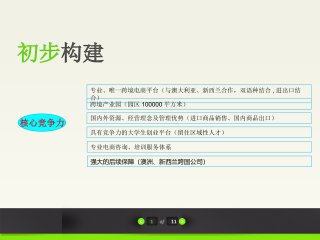
 2025-01-09 27
2025-01-09 27 -
跨境电商方案范文VIP免费

 2025-01-09 14
2025-01-09 14 -
创业计划书VIP免费
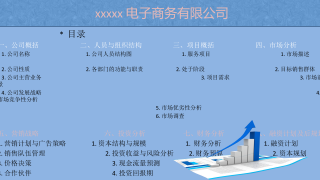
 2025-01-09 18
2025-01-09 18 -
xx生鲜APP计划书VIP免费

 2025-01-09 12
2025-01-09 12 -
跨境电商创业园商业计划书(盈利模式)VIP免费
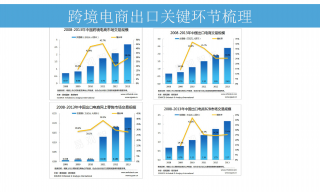
 2025-01-09 8
2025-01-09 8 -
跨境电商计划书VIP免费

 2025-01-09 13
2025-01-09 13 -
绿色食品电商平台项目计划书VIP免费

 2025-01-09 22
2025-01-09 22 -
农产品电子商务商业计划书VIP免费

 2025-01-09 8
2025-01-09 8 -
农村电商平台商业计划书VIP免费

 2025-01-09 13
2025-01-09 13 -
生鲜商城平台商业计划书VIP免费

 2025-01-09 21
2025-01-09 21
作者:牛悦
分类:高等教育资料
价格:15积分
属性:85 页
大小:2.56MB
格式:DOC
时间:2024-11-19


